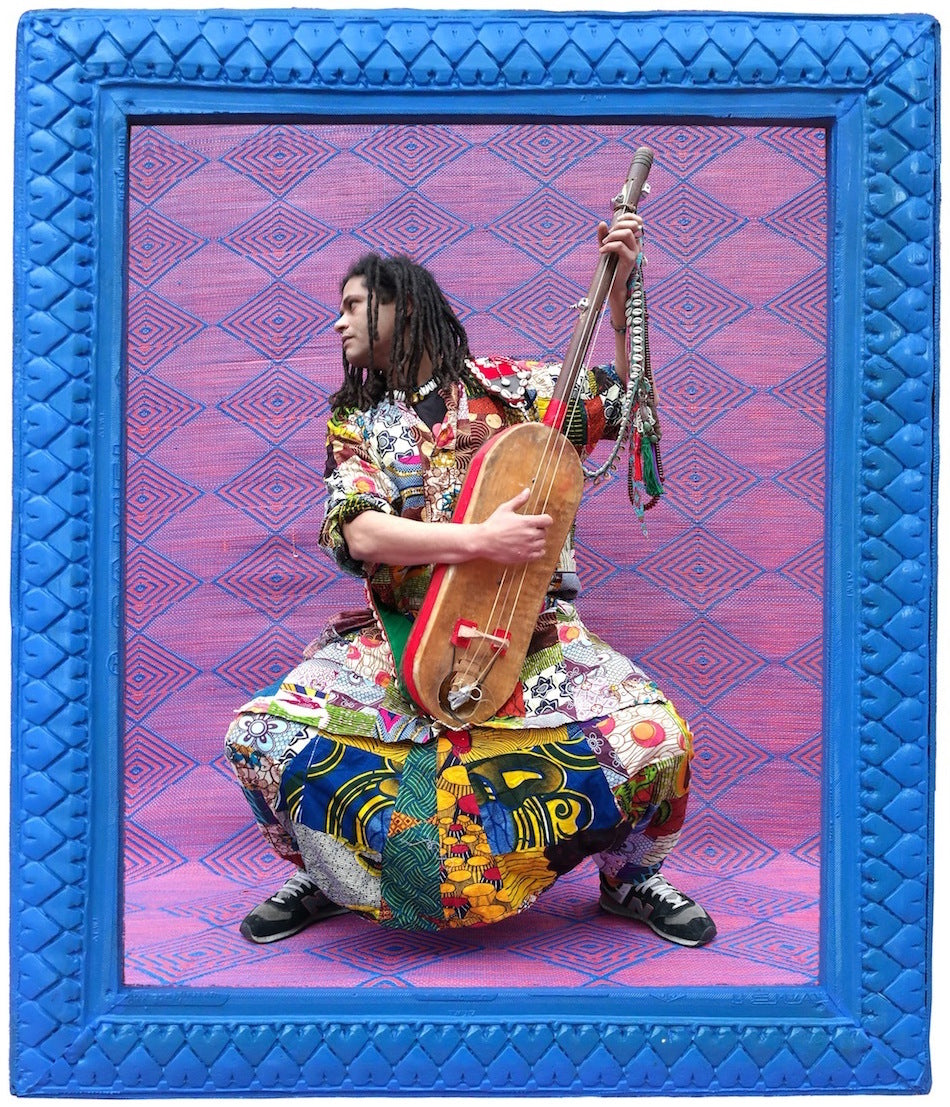Gnawa music is a story of pain, sorrow, care and gratitude which has never lost on its strength. Maybe it is the most trans- conscious music on earth… It all began… in the desert wilderness of Sub-Saharan Africa, mainly the Sahel and Maghreb countries. A story assignment had taken me to that remote corner of Africa or rather to London to speak to one of the most prominent Gnawa music representative Simo Lagnawi, living in the capital of the UK since 2008. While on the phone with him, I explained that our mutual friend photographer Hassan Hajjaj passed me his contact to learn about Gnawa music. I was faced with a world so incredibly remote from tourist traffic of London that it could have been a bridge to another planet… I spoke to Simo Lagnawi. Something extremely precious and rare was born in those few minutes.

Born in 1974 in Rabat, Simo is one of the few performers of the Gnawa musical tradition. He inherited his passion and, in a sense, the right to perform this art from his ancestors. From an early age, he explored the art of playing the three-string guembri and metal castanets called krakabs. Since 2009, he has been running his own group, Gnawa London, with whom he practices the traditional Gnawa repertoire. Simo´s charismatic personality and talent have been appreciated, among others, including Gnawa Festival (Gnaoua Festival), British Museum and other places
Interestingly, in Moroccan popular culture, Gnawas, through their ceremonies, are considered to be experts in the magical treatment of scorpion stings and psychic disorders. They heal diseases by the use of colours, condensed cultural imagery, perfumes and fright. The music is performed at lila, communal nights of celebration dedicated to prayer and healing guided by the Gnawa maalem, or master musician, and their group of musicians and dancers.
Many contemporary music researchers point out the numerous similarities between African-American music such as blues and music such as Gnawa and Sufi tariqa but what Gnawa is, is definitely prior any of these. The instruments used are to make sense of sounds surrounding slavery and set in relation to each other to tell a story of humanity.
The following shows a selection of music of Simo:
They are the heirs of ancient rituals and spiritual traditions that combine poetry, music and dance. No individual sound is ever better than any other. They all seem to be wooven into a pattern of rich simplicity - the master design for one man´s way of expressing himself. Simo adds that ´this music is not something you are going to learn from the school. You have to find that with the masters. Most of this music is street music.´ He continues by saying : ´ Every mastesr men & women has it´s own vibe, depending on how he walks or voice that he has. We are one but we are different. Therefore , ´Musical ceremonies (lilas) are conducted by a maalem, Maalema or "masters of gnawa " are a way of living, while on earth.
Interview with: Simo Lagnawi
Text by: Marta Marszalek


